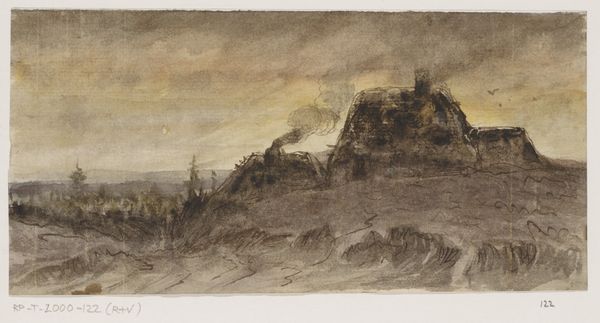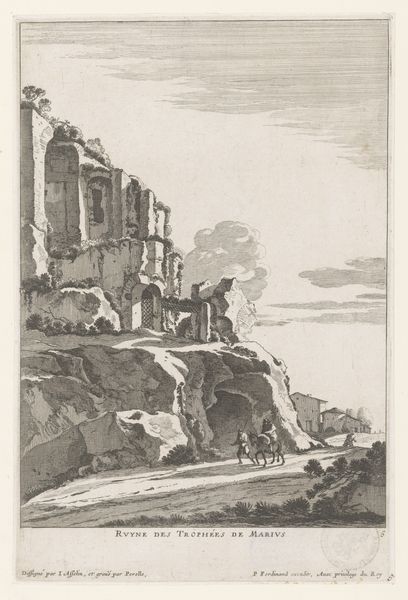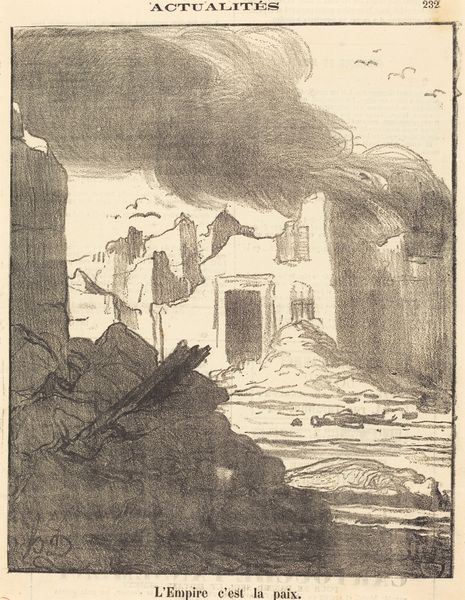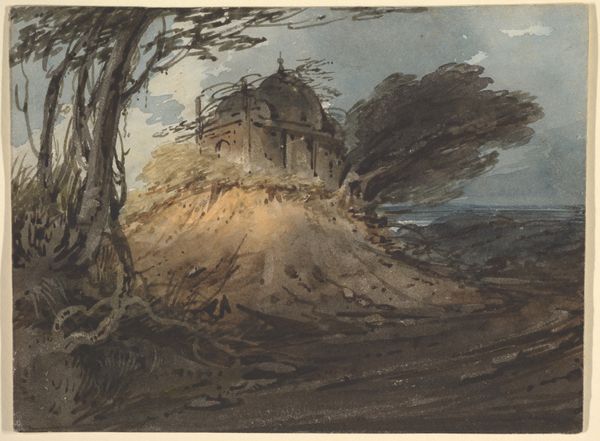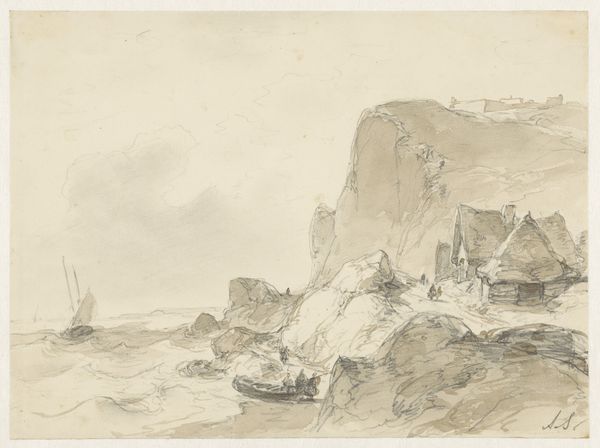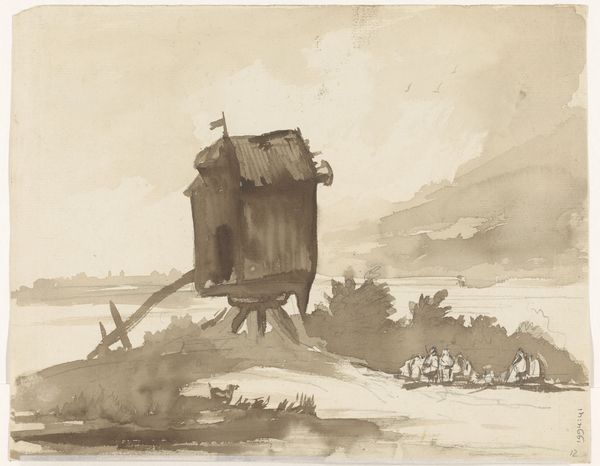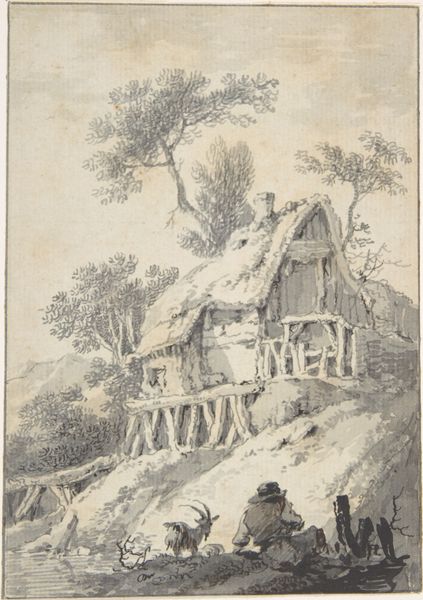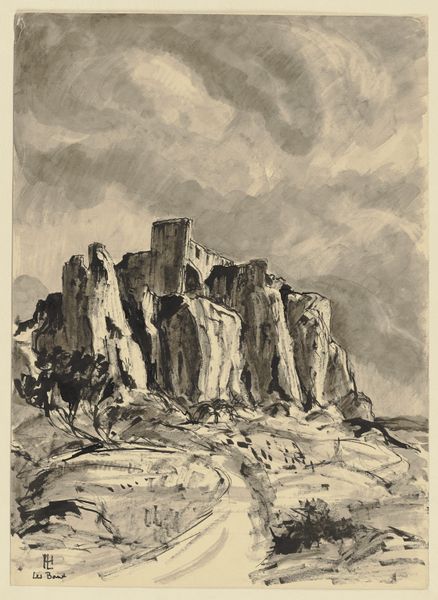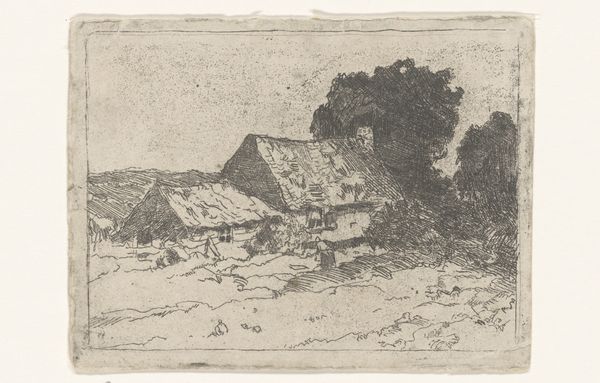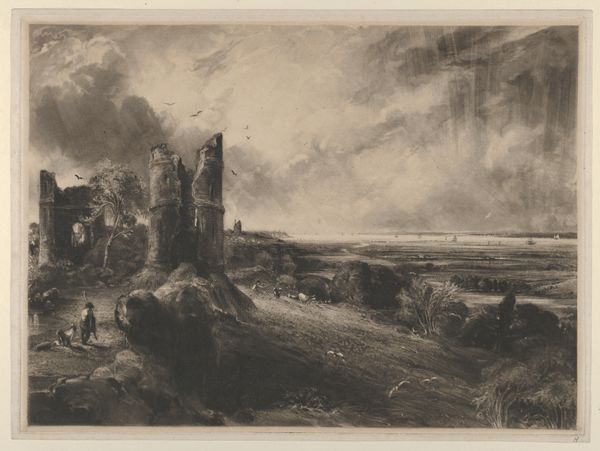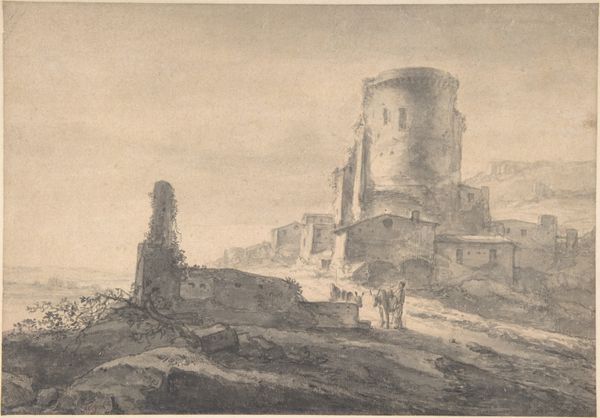
drawing, watercolor
#
drawing
#
landscape
#
figuration
#
watercolor
#
romanticism
#
cityscape
Dimensions: sheet: 10 3/4 x 7 3/4 in. (27.3 x 19.7 cm)
Copyright: Public Domain
Curator: Eugène Isabey’s 1843 work, "Village à Dieppe," a watercolor and drawing piece, offers a captivating vista of a coastal settlement. Editor: It immediately strikes me as wistful—a dreamlike composition relying on muted tones to create a melancholic atmosphere. Look at the gradations of gray and brown. Curator: Indeed, the limited color palette draws our attention to the materiality of the piece: paper, watercolor and ink meticulously combined to capture the social conditions and landscape of Dieppe. Notice the rough texture suggesting the coarse materials of the buildings, highlighting the daily labor embedded within the town's architecture. Editor: I agree that it focuses on surface texture and evokes depth and atmosphere. Note how the contrasting shades define shapes and details throughout this Romantic landscape. See the almost geometrical exactitude of its shapes which enhances the sense of structure despite the loose brushstrokes and blended watercolors. Curator: This reflects Isabey's interest in not just depicting a place but conveying the spirit of Dieppe and its working people. Watercolor lends itself perfectly to his desire to focus on depicting the human struggle set against the imposing backdrop of the environment and landscape. It’s important to reflect upon its accessibility, enabling wider participation in image creation than traditional oil paints permitted. Editor: Yet consider too how those buildings and mountains echo one another formally, using shape and perspective. The way he frames the tiny human figures makes them an integral part of the built and natural environment, and thus plays with perceptions, doesn't it? Curator: I agree, seeing figures situated carefully underscores the connection between the labor invested and the village as a center of life and commerce. It becomes something beyond the picture frame— Editor: Ultimately, by examining these relationships of light and shadow, and material application, one uncovers a wealth of details about our past in just one simple yet compelling artwork. Curator: Indeed, both material components and visual language guide how we engage, today, with Eugène Isabey's portrayal of 19th-century France.
Comments
No comments
Be the first to comment and join the conversation on the ultimate creative platform.

